There’s a certain magic to a perfectly cooked lamb chop. That beautiful, crispy sear, the tender, juicy meat, and the rich, savory flavour – it’s a culinary experience that always feels like a celebration. But achieving this culinary nirvana can seem daunting, especially for those who haven't mastered the art of pan-searing. Fear not, my fellow food enthusiasts! This guide is my personal blueprint for lamb chop perfection, a culmination of years of experimenting, countless trials and errors, and, most importantly, a deep love for this incredible cut of meat. We'll journey through every step, from choosing the right chops to creating those iconic crispy edges that will have your taste buds singing. Let's dive in!
Part 1: Choosing the Right lamb chops
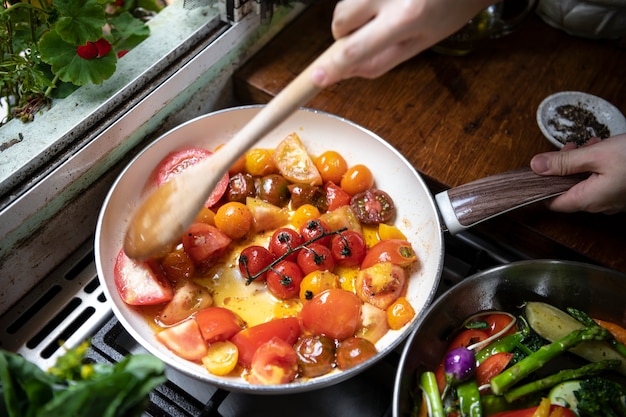
The journey to perfect lamb chops starts long before you even think about firing up the pan. It all begins with selecting the right ingredients, and in this case, it's about understanding the different cuts of lamb and making a choice based on your needs and preferences.
Understanding Cuts
Lamb chops come in a variety of forms, each with its unique characteristics that influence their cooking time, presentation, and overall taste.
- rack of lamb: This is the showstopper, a magnificent, bone-in section of ribs, typically 7-8 ribs long. It’s a glorious sight to behold, perfect for impressing guests and making a statement. It's usually roasted or grilled whole, serving as a centerpiece for a grand feast.
- Frenched Lamb Chops: These are individual ribs with the bone exposed and a decorative “Frenching” at the end, where the bone is cleaned and shaped for a visually appealing presentation. They're a beautiful and versatile option, perfect for individual servings.
- english cut Lamb Chops: Also known as “double chops,” these are two ribs connected together, a good choice for a larger serving. They're often favoured for their meaty size and satisfying flavour.
- Loin Chops: These are cut from the loin, the most tender part of the lamb, making them known for their leanness and often thinner profile compared to other cuts.
Choosing Quality
Once you've chosen your desired cut, the next step is choosing quality lamb. It’s about more than just grabbing a pack from the supermarket; it's about understanding what to look for to ensure a truly satisfying culinary experience.
- Colour: A good indicator of fresh, high-quality lamb is a deep, red colour with a hint of marbling, indicating a good balance of lean meat and fat. Avoid lamb that looks pale or has a brown tinge, as these could be signs of aging or improper storage.
- Texture: Fresh lamb should feel firm and springy to the touch, a testament to its quality and freshness. Avoid any lamb that feels mushy or has an off-putting odour, as this could indicate spoilage.
- Fat: Fat is not the enemy! It's crucial for both flavour and tenderness. Look for a good layer of fat running along the chop, ensuring a juicy, flavorful result.
- Source: Whenever possible, opt for lamb that's local and sustainably raised. This ensures a higher standard of animal welfare and often results in a more flavorful product. You can often find information about the origin of the lamb at your butcher or supermarket.
Part 2: Prepping the Lamb Chops
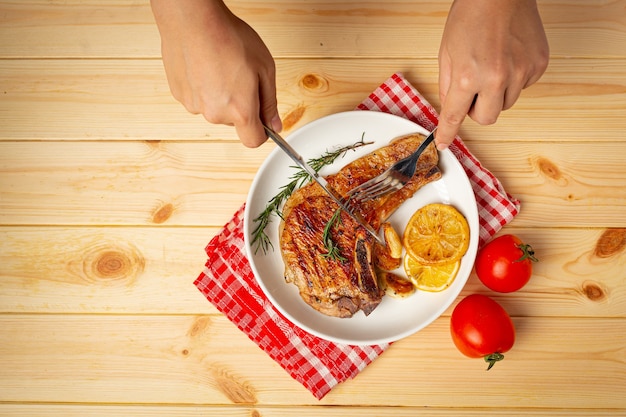
Now that you've chosen your perfect lamb chops, it's time to prep them for pan-searing. It might seem like a simple step, but a little attention to detail can make a world of difference in the final outcome.
Patting Dry and Seasoning
One of the most crucial steps is patting the chops dry with paper towels. This simple act ensures a beautiful, crispy sear, maximizing those delightful, caramelized edges. Once dry, generously season with salt and pepper. While you can get creative with other seasonings, I prefer to keep it simple and allow the natural flavour of the lamb to shine through. Let the lamb speak for itself!
Optional: Marinating
For those seeking a bolder flavour profile, marinating the lamb chops is a great way to infuse them with rich, complex flavours. My personal favourite marinade is a simple blend of olive oil, lemon juice, garlic, and herbs, but feel free to get creative and experiment with different flavour combinations. Marinate the chops in the refrigerator for at least 30 minutes, or up to a few hours, allowing the flavours to penetrate and enhance the lamb's natural deliciousness.
Part 3: Mastering the Pan-Sear
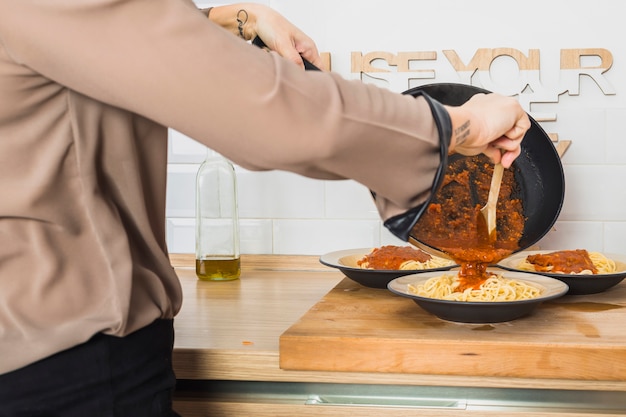
This is where the magic happens! The pan-searing process is all about achieving that beautiful, golden-brown exterior while keeping the inside tender and juicy. It's a dance of heat, time, and technique, and mastering it will transform your lamb chops from ordinary to extraordinary.
Choosing the Right Pan
A heavy-bottomed skillet or cast iron pan is your best friend for pan-searing. These workhorses retain heat exceptionally well, ensuring even cooking and achieving those coveted crispy edges. They're also excellent for creating the smoky, slightly charred flavours that elevate the overall experience.
Heating the Pan
The key to a successful sear is heat! Heat your pan over medium-high heat for about 5-7 minutes. You want it hot enough to create a beautiful sear without burning the meat. You can test the heat by placing a drop of water in the pan; it should sizzle and evaporate quickly, indicating the pan is ready for your lamb chops.
Sealing the Chops
Once your pan is gloriously hot, add a tablespoon or two of oil. I typically use a high-heat oil like avocado or grapeseed oil, as they have a high smoke point and can withstand the intense heat without burning. Gently place your lamb chops in the pan, making sure not to overcrowd them. Give them space to breathe! Let them sear for 3-4 minutes per side, without moving them until they have a nice, deep brown crust. Resist the urge to move them around too much, or you’ll disrupt the sear and prevent those perfectly caramelized edges.
Part 4: Resting and Serving
After the initial sear, it's crucial to let the lamb chops rest before slicing and serving. This allows the juices to redistribute, ensuring a more tender and flavorful result. It's a moment of anticipation, a chance to let the flavours deepen and the meat relax, rewarding you with a more satisfying experience.
Resting the Chops
Remove the lamb chops from the pan and place them on a plate. Cover them loosely with foil and let them rest for 5-10 minutes. While they’re resting, you can prepare your side dish or sauce, if you’re using one. It's a chance to create a harmonious symphony of flavours, where the lamb chops are the star performer and the accompanying elements are their supporting cast.
Serving Suggestions
Pan-seared lamb chops are incredibly versatile and pair beautifully with a wide range of sides and sauces.
- Classic: Roasted vegetables (asparagus, carrots, potatoes), mashed potatoes, a simple herb sauce. This is a timeless combination that highlights the lamb's natural flavour and creates a comforting, familiar experience.
- Mediterranean: Couscous, grilled vegetables, a lemon-herb sauce. This vibrant pairing brings a burst of freshness and brightness to the dish, perfectly complementing the richness of the lamb.
- Asian-inspired: Stir-fried vegetables, rice, a sweet and savory sauce with soy sauce, ginger, and garlic. This exotic combination adds a touch of spice and complexity, creating a unique and exciting culinary adventure.
Part 5: Tips and Tricks
Here are a few more tips and tricks that I've learned along the way to ensure your lamb chop journey is smooth, successful, and absolutely delicious.
Temperature Control
Use a meat thermometer to ensure your lamb chops are cooked to your desired level of doneness. This is especially important for lamb, as it can quickly go from tender and juicy to dry and tough if overcooked. Here's a guide to common temperatures:
| Doneness | internal temperature (°F) |
|---|---|
| Rare | 125-130 |
| Medium Rare | 130-135 |
| Medium | 135-140 |
| Medium Well | 140-145 |
| Well Done | 145 |
Remember that lamb chops will continue to cook slightly after they’re removed from the heat. It’s better to err on the side of slightly undercooked, as you can always cook them a bit longer if needed. It's a delicate balance, and trust your intuition!
Avoiding Overcrowding
Don’t overcrowd your pan when searing the lamb chops. If you have too many chops in the pan, they will steam instead of sear, resulting in a tough and chewy exterior. This is a crucial step to remember, as overcrowding not only affects texture but also prevents the development of those gorgeous crispy edges. If you’re cooking a lot of chops, sear them in batches, ensuring each chop has ample space to reach its full potential.
Using a Timer
Use a timer to keep track of your cooking time. It’s easy to get distracted in the kitchen, and you don’t want to overcook the lamb chops. It's a simple yet essential tool that helps you maintain control and ensure your lamb chops are cooked to perfection.
Part 6: Common Mistakes
Even the most seasoned cooks make mistakes sometimes. It's part of the learning process, and we all have our moments of culinary mishaps. Here are a few common pitfalls to avoid, allowing you to confidently navigate the path to lamb chop perfection.
Overcrowding the Pan
As mentioned earlier, overcrowding the pan will lead to steaming instead of searing, resulting in a tough and chewy exterior. It's a simple mistake to avoid, but one that can significantly impact the final result.
Not Letting the Pan Get Hot Enough
A hot pan is essential for a good sear. If the pan isn’t hot enough, the meat will stick and won’t get that beautiful brown crust. Think of it as a controlled burn, where the heat creates those irresistible caramelized edges that add depth and complexity to the flavour.
Moving the Lamb Chops Too Soon
Be patient and let the chops sear for the full 3-4 minutes on each side before moving them. Moving them too soon will disrupt the sear and prevent the development of a flavorful crust. It's a test of your patience, but trust the process, and the rewards will be worth it.
Overcooking the Lamb Chops
Overcooked lamb chops will be dry and tough. Use a meat thermometer to check the internal temperature and avoid overcooking. Lamb is a delicate protein, and it's easy to overcook it, resulting in a disappointing meal.
Part 7: Creative Variations
Once you’ve mastered the basic pan-searing technique, it's time to unleash your creativity and explore different flavour profiles. It's about taking the foundation of perfect lamb chops and building upon it, creating your own signature dishes.
Herb-Crusted Lamb Chops
Combine your favourite herbs, like rosemary, thyme, and parsley, with breadcrumbs and a little olive oil. Press the mixture onto the lamb chops before searing, creating a fragrant crust that adds a burst of freshness and flavour. It's a simple yet elegant twist that elevates the lamb chop experience.
Honey-Garlic Lamb Chops
For a sweet and savory flavour, brush the lamb chops with a mixture of honey, soy sauce, and garlic before searing. The honey will caramelize during the cooking process, creating a delicious glaze that adds depth and complexity to the dish. It's a perfect combination of sweet, savory, and a hint of tanginess, truly irresistible.
Spiced Lamb Chops
Incorporate your favourite spices, such as cumin, coriander, paprika, and chili powder, into the seasoning for a warm and flavorful dish. Spices can add a layer of warmth and complexity to the lamb chops, creating a truly unique flavour profile. Experiment with different spice blends to find your personal favourite.
Part 8: FAQs
Still have questions? Here are answers to some common inquiries.
Q: Can I pan-sear frozen lamb chops?
It's not recommended to pan-sear frozen lamb chops. They’ll take longer to cook and may not cook evenly. It’s best to thaw them in the refrigerator overnight before searing. Thawing the lamb chops properly ensures even cooking and prevents the meat from becoming tough or dry.
Q: What if my lamb chops are too thin?
If your lamb chops are very thin, you may want to adjust your cooking time. Check the internal temperature to ensure they are cooked to your liking. Thin lamb chops cook faster, so be mindful of the time to prevent overcooking.
Q: Can I use a different oil for searing?
Yes, you can use other high-heat oils like avocado oil, grapeseed oil, or peanut oil. Avoid using olive oil, as it has a low smoke point and can burn. Choosing the right oil is essential for achieving a successful sear, so select one that can withstand the high temperatures without burning.
Q: How long can I store cooked lamb chops?
Cooked lamb chops can be stored in the refrigerator for up to 3-4 days. Reheat them gently in the oven or microwave. Proper storage ensures the lamb chops remain safe and tasty, allowing you to enjoy them for several days.
Q: What if my lamb chops are tough?
If your lamb chops are tough, it’s likely they were overcooked. To prevent this, use a meat thermometer and cook them to your desired level of doneness. You can also try marinating the chops in a tenderizing marinade before cooking. Overcooked lamb chops can be salvaged by adding moisture and flavour. A simple sauce or a generous amount of pan juices can help restore their tenderness.
Everyone is watching

Perfect Rice Every Time: The Ultimate Guide to Cooking Rice
Cooking TipsAs a self-proclaimed foodie, I've always been a bit obsessed with rice. It's the foundation of countless cuisi...

Ultimate Guide to Cooking the Perfect Thanksgiving Turkey
Cooking TipsThanksgiving. Just the word conjures up images of overflowing tables laden with delicious food, the scent of r...

The Ultimate Guide to Cooking Asparagus: Tips, Techniques, and Recipes
Cooking TipsAsparagus. The mere mention of this spring delicacy conjures up images of vibrant green spears, crisp and burs...
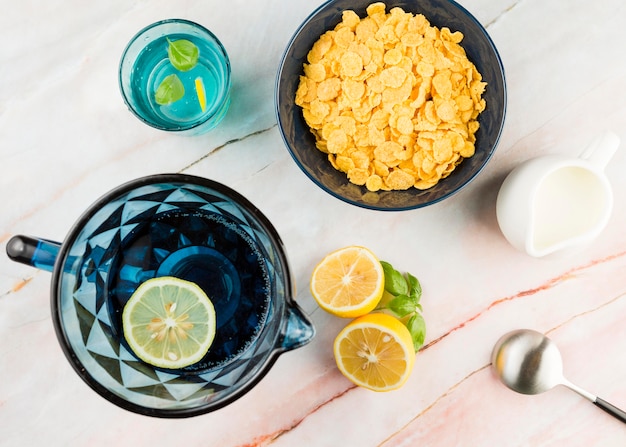
Can You Cook Spaghetti with Gasoline? (The Shocking Truth)
Cooking TipsWe've all seen those crazy internet trends. You know, the ones that make you wonder, "Did someone actually try...
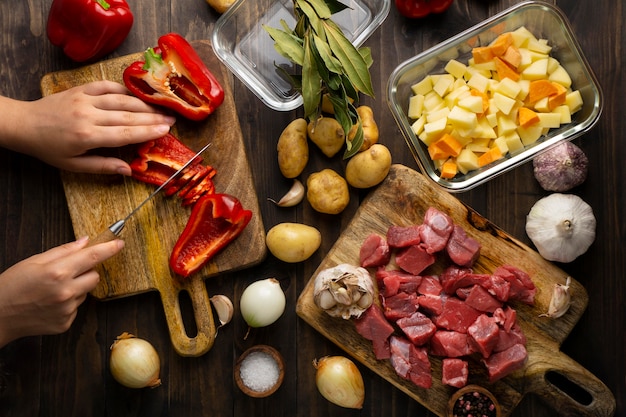
Chorizo and Eggs Recipe: The Ultimate Guide
Cooking TipsRight, let’s talk about chorizo and eggs. You know, that classic Spanish dish that's always a winner. It's th...
